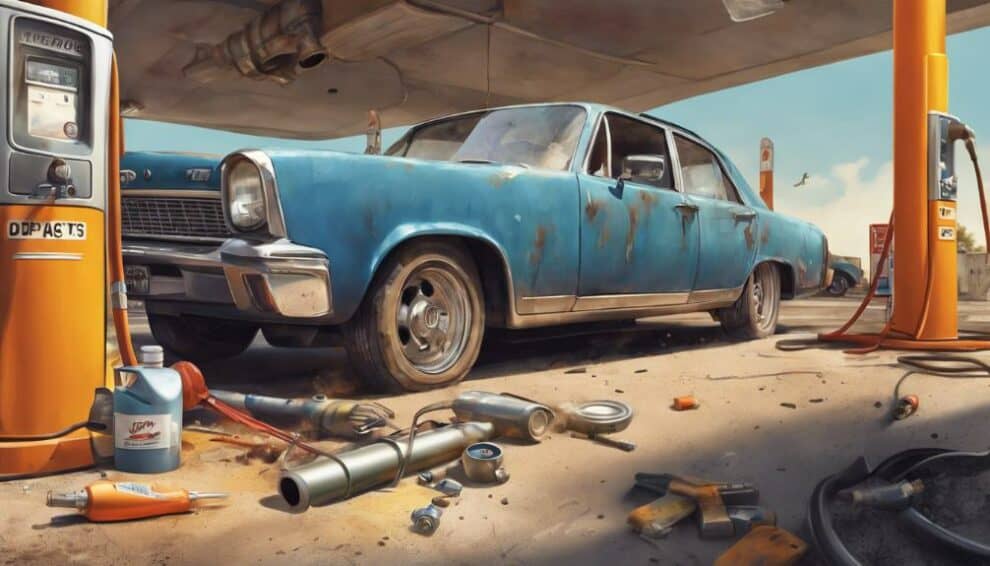Experiencing post-refuel stalling in your car? The common culprits are EVAP system malfunctions, fuel system leaks, and faulty purge solenoids.
Vapor lock from high temperatures or contaminated fuel can also cause issues. Troubleshoot fuel pump strain and check the electrical system regularly.
To fix the problem efficiently, inspect hose seals, purge solenoids, and monitor fuel quality. Address vapor lock and maintain clean fuel levels. Proper maintenance and timely replacements guarantee peak engine performance.
Understanding these reasons can help you diagnose and resolve the stalling efficiently.
Key Points
- Check for EVAP system malfunctions like purge solenoid issues.
- Inspect fuel system for leaks, especially hoses and seals.
- Ensure purge solenoids are functioning properly to prevent stalling.
- Address vapor lock by maintaining consistent fuel levels and proper venting.
- Avoid contaminated fuel by using quality fuel and additives for engine health.
EVAP Emission System Malfunction
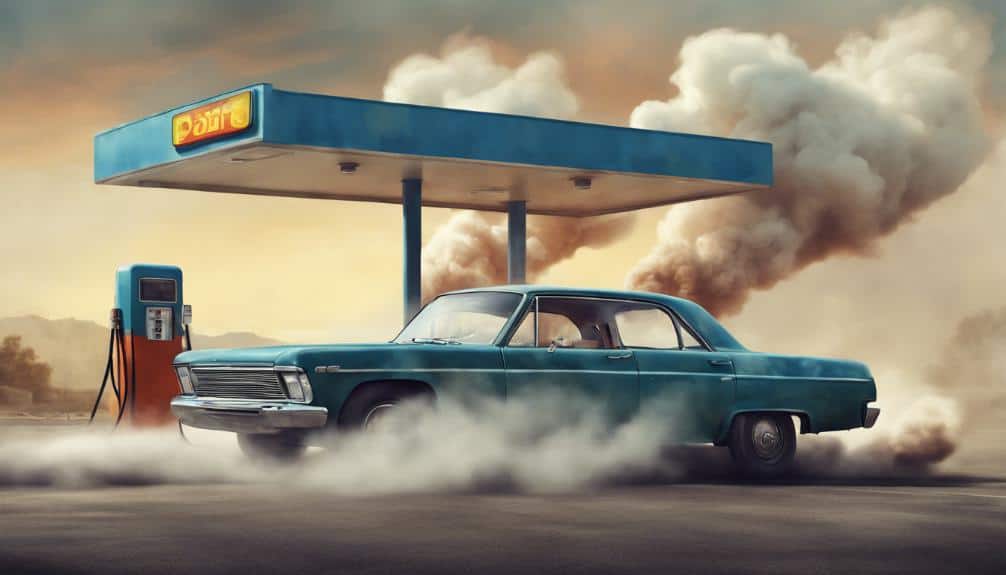
If your car cuts out after filling up, a malfunction in the EVAP emission system could be to blame. The EVAP system diagnostics play a vital role in detecting issues related to the emission control solutions.
When excessive fuel vapors enter the engine due to a faulty EVAP system, it can lead to stalling after refueling. One common culprit is a malfunctioning purge solenoid within the EVAP system.
If you notice a vacuum source in the fuel tank, it’s a clear indicator of a problem with the EVAP system.
A trouble code like P0496, indicating flow during non-purge situations, is often associated with EVAP issues causing post-refuel stalling.
Properly diagnosing and replacing the purge solenoid can effectively resolve EVAP system malfunctions, ensuring that your car runs smoothly after filling up.
By understanding these aspects of the EVAP emission system, you can address stalling issues promptly and keep your vehicle in top working condition.
Fuel System Leaks
Detecting and addressing fuel system leaks promptly is essential for ensuring safety and peak vehicle performance. When faced with a fuel system leak, here are some steps to keep in mind:
- Hose inspection: Regularly check for any signs of wear, cracks, or leaks in the fuel hoses. Damaged hoses can lead to fuel leaks and should be replaced immediately.
- Seal replacement: Faulty seals, such as those around the fuel injectors or fuel pump, can cause leaks. Inspect these seals for any signs of deterioration and replace them if needed.
- Seek professional help: If you suspect a fuel system leak but are unsure of the source, it’s best to consult a professional mechanic. They have the expertise and tools to diagnose and fix the issue effectively.
- Safety first: Remember that dealing with fuel system leaks can be critical due to the flammability of gasoline. Take precautions, such as working in a well-ventilated area and avoiding open flames or sparks.
Faulty Purge Solenoids
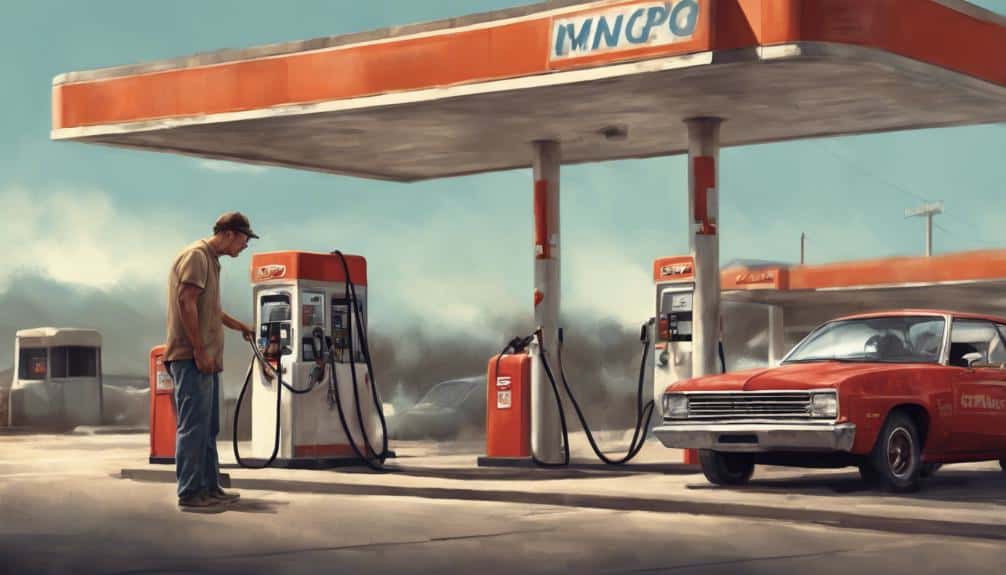
Regularly checking the condition of your vehicle’s purge solenoid can help prevent post-refuel stalling issues.
The purge solenoid plays an important role in controlling the flow of fuel vapors from the evaporative emissions system to the engine.
If the purge solenoid is faulty, it can allow unmetered fuel vapors to enter the engine, leading to stalling and rough running problems. One common issue that can arise with purge solenoids is vacuum leaks.
These leaks can disrupt the proper functioning of the solenoid, affecting emission control and engine performance.
When diagnosing purge solenoid problems, it’s essential to inspect the vacuum source connected to the solenoid. This inspection can help pinpoint any leaks or issues that may be affecting the solenoid’s operation.
If a faulty purge solenoid is identified as the cause of post-refuel stalling, replacing it can often resolve the issue and restore smooth engine operation.
Regular maintenance and timely replacement of purge solenoids can help prevent future stalling issues after refueling.
Vapor Lock Issues
Vapor lock issues can cause your car to stall shortly after refueling due to fuel vaporizing before reaching the engine. This can disrupt the fuel flow, leading to engine hesitation and stalling.
To address vapor lock problems and prevent stalling, consider the following:
- High Temperatures: Engine overheating can contribute to vapor lock, particularly in older vehicles with less efficient cooling systems.
- Heat Shields and Insulation: Installing heat shields or insulating fuel lines can help prevent vapor lock in hot climates or with high-performance engines.
- Proper Venting: Make sure your fuel cap is properly vented to maintain a consistent fuel level and reduce the risk of vapor lock occurrences.
- Consistent Fuel Level: Maintaining a consistent fuel level in your tank can also help minimize the chances of vapor lock affecting your engine’s performance.
What are some common reasons for post-refuel stalling in a car, and could it be related to the car slowing down when speeding up?
Post-refuel stalling in a car can occur due to various reasons for car slowing, such as a faulty fuel pump, dirty fuel injectors, or a clogged air filter. This issue may not directly cause the car to slow down when speeding up, but it can indicate underlying problems with the fuel system.
Contaminated Fuel Problems
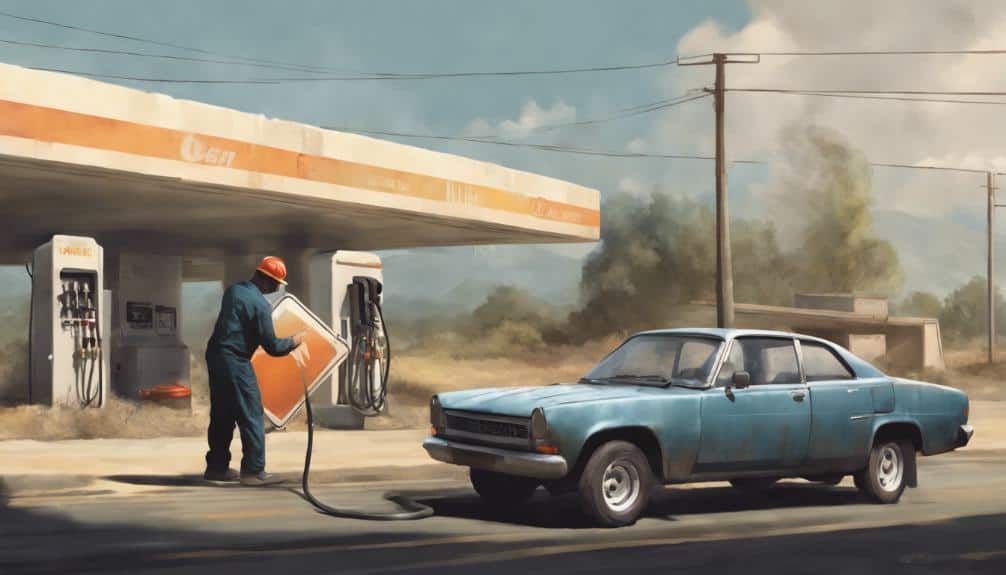
Contaminated fuel poses a significant risk of engine stalling after refueling due to potential clogs and combustion disruptions. Fuel quality is vital for proper engine performance.
Sediments or debris in the fuel can clog filters and injectors, leading to issues like rough idling, hesitation, or stalling after refueling.
Water or impurities in the fuel can disrupt combustion, hindering engine performance. Using low-quality or old gasoline can introduce contaminants that affect engine function.
If you experience these symptoms, contaminated fuel problems might be the culprit. To address this, consider using fuel additives or cleaners designed to remove impurities.
Then, having your fuel system inspected by a professional can help diagnose and resolve any contaminated fuel issues.
Ensuring you fill up at reputable gas stations with high-quality fuel can also prevent these problems in the future. Remember, maintaining clean fuel is essential for efficient engine operation.
Fuel Pump Troubleshooting
If your car cuts out after refueling, troubleshooting the fuel pump is crucial to identify potential issues. Here are some fuel pump diagnostics and maintenance tips to help you address the problem:
- Check Fuel Levels: Make sure you maintain a sufficient fuel level to prevent strain on the fuel pump. Running out of gas can lead to fuel pump damage due to lack of lubrication.
- Inspect Fuel Filter: Sediments from the tank can clog the fuel filter, causing fuel pump issues. Regularly checking and cleaning the fuel filter can help prevent this.
- Monitor Fuel Quality: The fuel pump relies on gasoline for cooling and lubrication. Using clean and high-quality fuel can prevent overheating and damage to the pump.
- Regular Maintenance: Refill your tank before it reaches empty to avoid straining the fuel pump. This simple maintenance tip can contribute to the longevity of your fuel pump and prevent stalling issues after refueling.
Electrical System Glitches
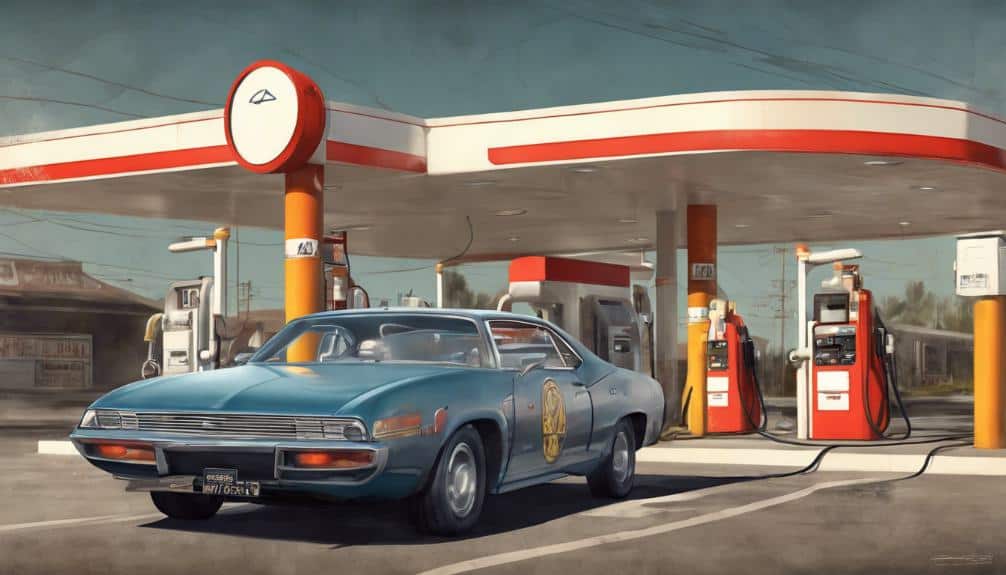
Regular maintenance and inspection of your vehicle’s electrical components can help prevent stalling issues after refueling.
Ignition system maintenance is important to guarantee proper functioning of spark plugs, ignition coils, and other related parts.
Faulty sensors or corroded wiring can disrupt the electrical system, causing your car to cut out after filling up with gas. Then, a malfunctioning fuel level sensor may misread the gas level, leading to stalling post-refuel.
It’s essential to also consider alternator inspection to check for proper charging of the battery and overall electrical system health.
Problems with the alternator can contribute to stalling issues, as it plays a significant role in supplying power to various electrical components.
As an Amazon Associate we earn from qualifying purchases.







